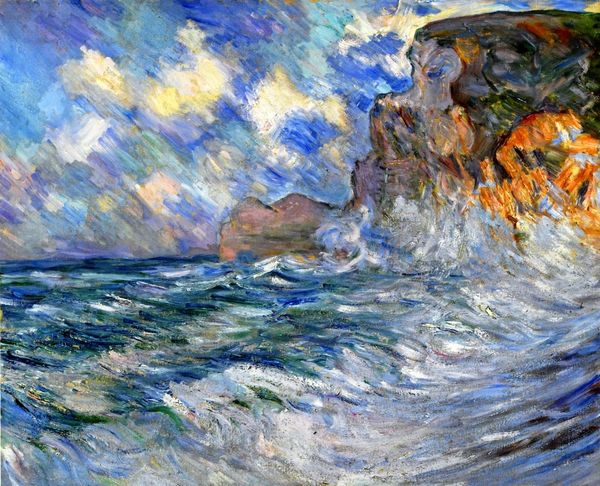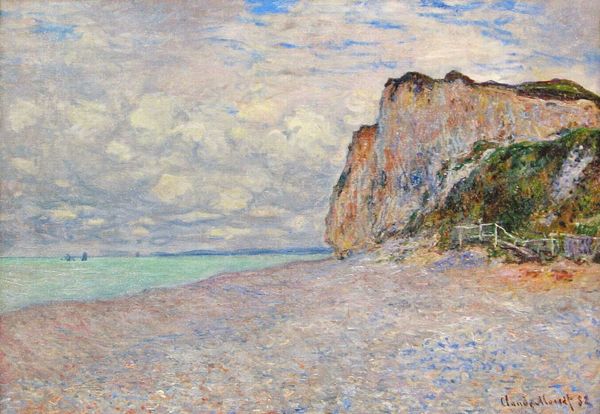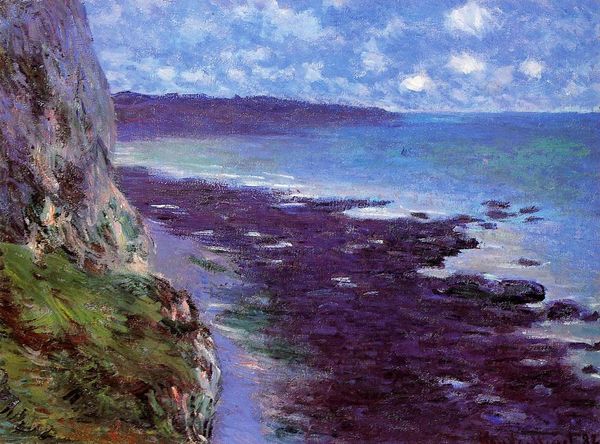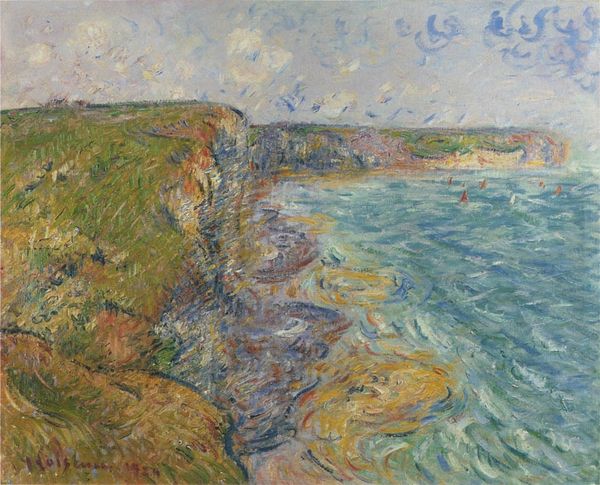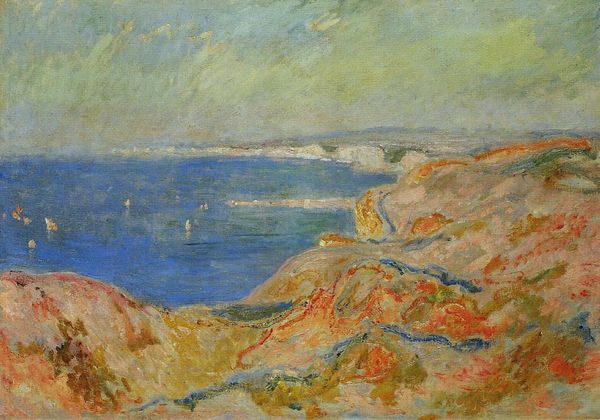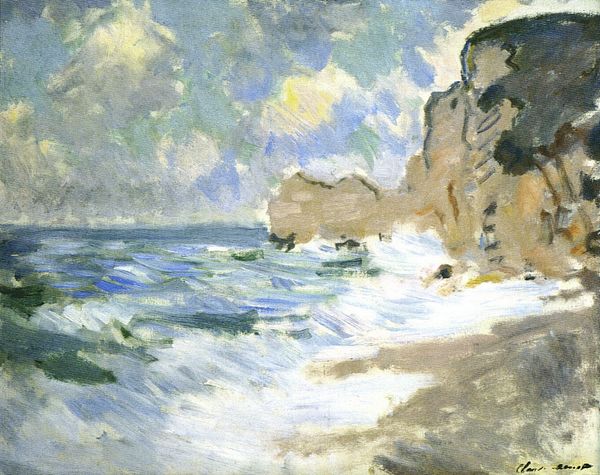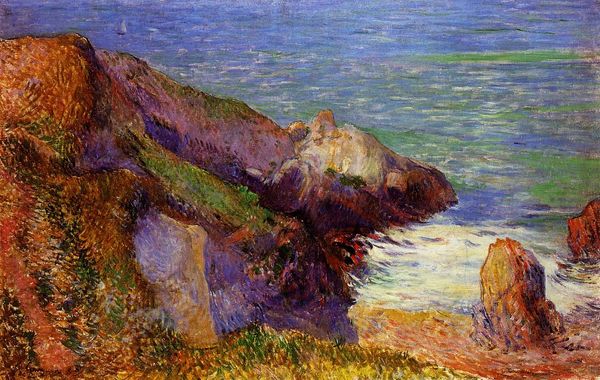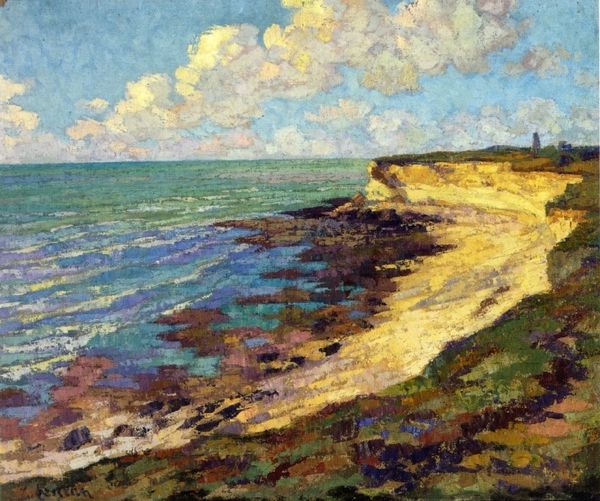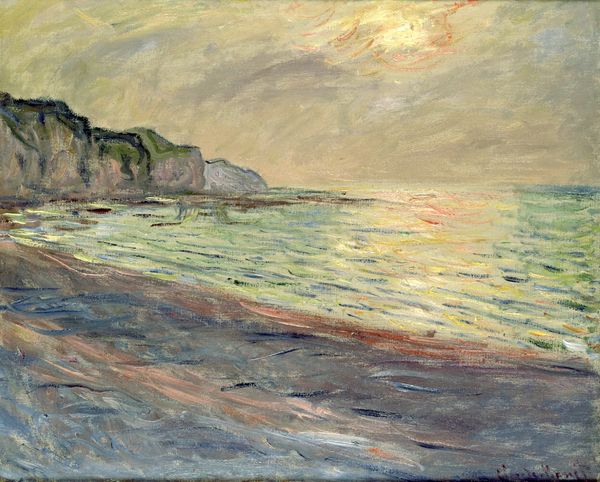
painting, plein-air, oil-paint
#
sky
#
painting
#
impressionism
#
impressionist painting style
#
plein-air
#
oil-paint
#
landscape
#
impressionist landscape
#
seascape
#
post-impressionism
#
sea
Copyright: Public domain
Claude Monet painted these Cliffs at Amont with oil on canvas at some point in his career, but without a date, we can only infer the when based on its style. Monet and his fellow impressionists were deeply invested in challenging the French Academy's control over art. Consider the subject: this isn't a grand historical scene or portrait of nobility, but a simple coastal landscape. Look at the brushwork too. Rather than blending the paint to create a smooth, realistic surface, Monet uses short, visible strokes to capture the fleeting effects of light and atmosphere. This loose style was seen as radical in its time because it prioritized the artist's subjective experience over traditional ideals of beauty and finish. To understand this painting fully, we need to look into exhibition records, critical reviews, and the writings of Monet and his contemporaries. This helps us see how the painting challenges the institutions of art in 19th century France. Ultimately, this painting stands as a testament to the power of art to challenge conventions and offer new ways of seeing the world.
Comments
No comments
Be the first to comment and join the conversation on the ultimate creative platform.
